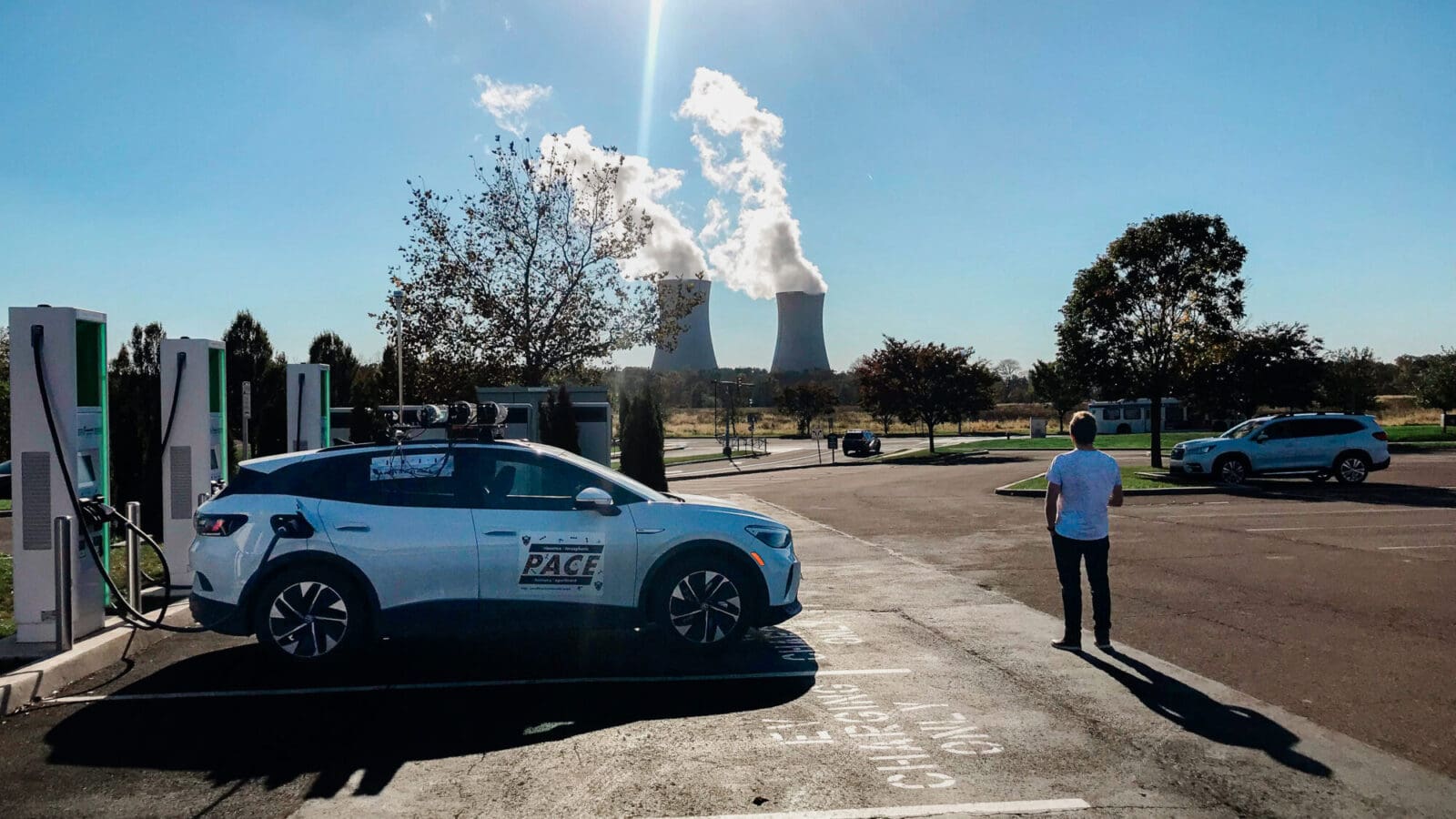
Retiring coal plants with climate and equity in mind
By
on
The analysis underscores the value of rethinking cost-driven retirement strategies, showing instead that climate- or equity-focused strategies would lead to lower carbon emissions, air pollution, and pollution-attributable deaths in Pennsylvania and nearby states. Their study was published on August 19 in Environmental Science & Technology.
“Often, policies aren’t designed with environmental justice or climate goals as explicit objectives,” said first author Carla Campos Morales, a visiting graduate student in public and international affairs. “We’re showing what the potential outcomes could be if we instead prioritize factors like carbon-intensity or environmental equity when making decisions about which coal plants to retire.”
The researchers found that retiring half of the coal plants in Pennsylvania could reduce electricity-related carbon dioxide (CO2) emissions in the state by up to 12%, cut air pollutant emissions by up to 75%, and avoid up to 20% of the deaths attributable to fine particulate matter (so called PM2.5) exposure when compared to a business-as-usual, no-retirement scenario. In these alternative scenarios, many health benefits were also concentrated in communities that have been disproportionately impacted by impacts of pollution.
“In the U.S., we have a unique policy window where we can be designing our retirement strategies differently in order to maximize the benefits to the climate and communities,” said research leader Wei Peng, assistant professor of public and international affairs and the Andlinger Center for Energy and the Environment.
Cost, climate, and environmental equity
The researchers modeled six scenarios for 2019 to compare the outcomes of retiring half of Pennsylvania’s coal plants under different priorities: retiring the cheapest-to-close plants first, the most carbon-intensive plants first, or the plants located closest to environmental justice areas first.
The researchers relied on Pennsylvania’s definition of environmental justice areas for the project, which until September 2023 were identified as census tracts with 20% or more individuals living at or below the poverty line, with 30% or more of the population identifying as a non-white minority, or both. While the definition for environmental justice areas has since been updated, the researchers said their study’s general insights about retiring plants near environmental justice areas still apply, and that such retirements are a significant opportunity to mitigate both pollution and historical environmental injustices.
For each of the three priorities, the researchers also studied the impacts of retiring 50% of coal plants in 2019 based on either capacity, which is the maximum electric output a power plant could produce, or generation, which refers to the actual amount of electricity produced. While capacity is the more straightforward metric, Peng said generation is more reflective of the impact that coal power plants can have on local communities and the climate.
“In terms of health and environmental outcomes, it’s not about how much coal you could be burning, but instead about how much coal you’re actually burning,” said Peng, who is also a core faculty member at the Center for Policy Research on Energy and the Environment. “You could have a large coal plant that is rarely in use. Retiring a plant like that would significantly reduce coal-burning generation capacity, but reductions to overall air pollution might be minimal.”
Compared to the actual generation in 2019, the researchers found that the alternative scenarios — especially the ones prioritizing climate and environmental justice — led to significant reductions in carbon emissions and air pollutants.
For instance, retiring half of the state’s coal capacity by retiring the most polluting facilities first would cut particulate matter pollution by 75% in Pennsylvania. The team found that such a reduction could help to avoid around 84 PM2.5-attributable deaths in Pennsylvania, which is 20% fewer deaths than the scenario based on the actual electricity generation in 2019.
Through their model, the team also uncovered that states downwind of Pennsylvania, including New Jersey, Maryland, and Delaware, also saw lower air pollution as a result of retiring plants in Pennsylvania. In the same scenario — retiring 50% of coal capacity with climate as the priority —the retirements not only reduced PM2.5-attributable deaths in Pennsylvania but also avoided an additional 52 deaths in the rest of the PJM Interconnection, a regional transmission organization operating across 13 states and the District of Columbia.
The findings, Campos Morales argued, underscore the importance of looking beyond state borders when developing energy and climate targets.
“Our results really highlight that none of these decisions are happening in a vacuum,” Campos Morales said, who is a PhD student in Pennsylvania State University’s Department of Civil and Environmental Engineering. “Decision-makers need to be thinking about how policies can have ripple effects — positive or negative — across a region.”

Peng added that their findings about the regional impacts of state-level decisions represent an important yet underappreciated consideration for the energy transition. The present research also builds on previous work from Peng’s group about the regional emissions and public health impacts of Pennsylvania joining the Regional Greenhouse Gas Initiative (RGGI). RGGI is a cap-and-trade system in the northeastern United States that targets carbon emissions from the energy sector.
“Last year, I hosted a workshop with regulators and policymakers from several states, and there was consensus across the state agencies that regional coordination and collaboration is critical,” Peng said. “But on the other hand, I do see it as an emerging effort that will require more time and effort from decision-makers across different states to make it happen.”
Research with actionable outcomes
According to Peng, one of the strengths of the research is its relevance to Pennsylvania policymakers and regulators. Aligned with her group’s mission to develop human-centered energy systems models to inform more realistic and durable climate policies, Peng and her team engaged with state agencies and other stakeholders in the research process to build models that provide the most relevant information.
“Our work is very action-oriented,” Peng said. “When we designed the scenarios, we had the Pennsylvania Department of Environmental Protection in mind. With both this paper and our previous one, we thought about the kinds of analyses that would be helpful to them as decision-makers.”
Still, the team is continuing to expand their model to provide information about several other relevant factors, such as the impact of retirement decisions on local job loss and creation. In their current model, for example, coal retirements in Pennsylvania often spurred energy generation in other areas of the PJM Interconnection, meaning that jobs in local communities associated with coal may not be replaced with new energy sector jobs in the same community.
“People care about having better air quality and lower pollution, but they also care about their jobs,” said Campos Morales. “So not only is it important to understand how these retirement decisions could impact people’s livelihoods, but also to think about how we can help people who have been working in the coal industry to transition to careers in renewable energy or other industries.”
The paper, “Designing Retirement Strategies for Coal-Fired Power Plants to Mitigate Air Pollution and Health Impacts,” was published August 19 in Environmental Science & Technology. In addition to Peng and Campos Morales, co-authors include Emily Pakhtigian, Joel Landry, and Hannah Wiseman of Pennsylvania State University, as well as An Pham of the University of Michigan, Ann Arbor. The work was supported by a grant from the Pennsylvania State University Institutes of Energy and the Environment, and also received support from the Penn State College of Engineering and Princeton’s Andlinger Center for Energy and the Environment.
The previous paper, “Emissions and Health Implications of Pennsylvania’s Entry into the Regional Greenhouse Gas Initiative,” was published August 31, 2021 in Environmental Science & Technology. Authors on the paper include Peng as well as Hui Yang, An Pham, Joel Landry, and Seth Blumsack.






